#Fauna Diversity
Explore tagged Tumblr posts
Text
EDIT: closed! working on the requests now ;)
Yo!
I've been in the mood to draw some Fauna diversity. So, an once-a-time thing, I'm gonna take requests. Followers only please!
Not many rules, they will be small colored doodles with perhaps some basic shading. Keep iin mind I will NOT draw characters, just cartoony animals of different species, most likely in simple poses.
Please feel free to ask for ANY species, no matter how obscure! In fact, I encourage you to request some lesser known species, they're kind of my thing after all.
I'll make about 5 to 10 :>
So, ask away! <3
12 notes
·
View notes
Text
Natlan is not even out and there is already discourse on it. Like BRUH
#☆ ┆ ( .ooc. );#//For once; I actively agree with a side#//How in the FUCK did you expect Natlan to be ONLY volcanos and destruction and complain we got Rio basically#//and it was only a lil SNAPSHOT of the place too! Like BRUH; It is based in Latin America/African cultures and nations#//OFC there will be places that resemble tropical areas & have creatures that suit it. Of course there will be DIVERSE & LIVELY BIOMES#//Like; even with my hopes of it being like Atlantis from the movie; thought it’d be like the sequel#//& Sorta envisioned there having vibes like. Tenochtitlan but a lake of lava. but still so full of life and flora/fauna adapted to it#//The place itself elevated high enough above the lava so the ppl wouldn’t get crispied; ofc. but STILL#//Even with volcanic activity & war; the ENTIRE nation can’t be a fucken desolate wasteland; like come ON#//Do you think LATAM was a fucken ravaged wasteland before/after the conquistadors swung by to fuck shit up?? NO#//Y’all want the Mare Jivari or smth. Which we could still get; bc it’s supposedly NEAR Natlan#//Like I wouldn’t be surprised if there WERE part of the Nation of War that were ruined and desolate#//Every nation had SOME part of it that look like that. But to expect the WHOLE place to???& get upset at the life and color of the place??#//And to top it all off; WE HAVE NPCS WHO TALK ABT HOW MUCH THEY LIKE NATLAN. Do you think they would if it was just WASTELAND??#//B r u h. Wheres that one I think it was a tweet. Abt Natlan being inspo’d by LATAM/Africa not fuckin HELL#//Rare angy ranting mkfhfb#//But yeah; I’m holding fast to this. What the fuck
7 notes
·
View notes
Text
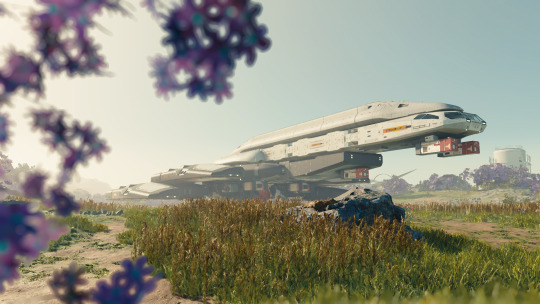
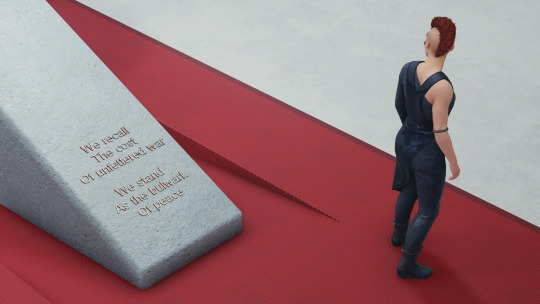
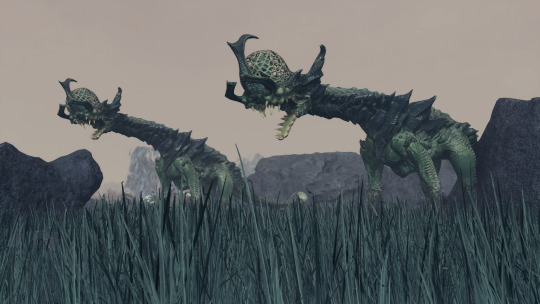
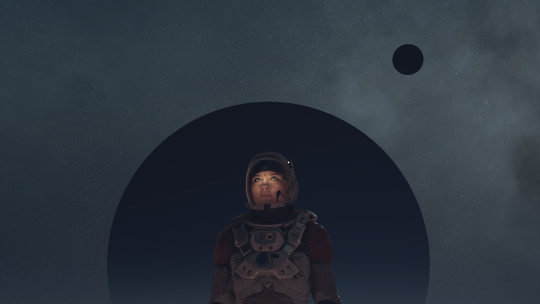
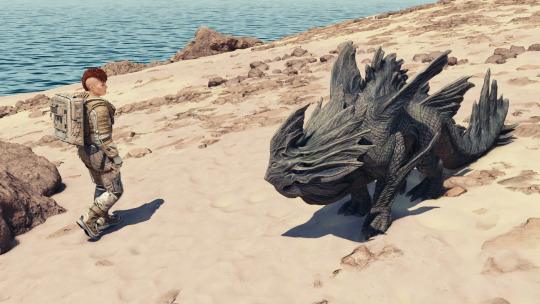
Today's adventures!
#the creature artists really popped off with this game honestly#that last guy is stunning up close. three sets of different-colored eyes and a gorgeous scaled carapace#they cheat the planetary fauna diversity by reusing anim rigs but the creature-to-creature art and modeling is bespoke as hell and it RULES#starfield#my shots
23 notes
·
View notes
Text
#justenvironmentalscientistthings - getting distracted from writing the whump part of this fic by talking about shells lol
#dw i'll post it here & on ao3 once it's done#but like... i have relevant field guides. i HAVE to let people know about the diversity of invertebrate fauna on the atlantic coast#or else i'll Die.#chatter tag
0 notes
Text






























International Day for Biological Diversity
Biodiversity, a simple word with some very broad reaching implications. Biodiversity, when split into it’s component parts, “Diversity” defined as “a range of different things.” and bio meaning “life”, quite simply means “A Diversity of Life”. It has been shown that ecological niches with good biodiversity flourish and are healthy.
The History of the International Day for Biological Diversity
The International Day for Biological Diversity was first established in 1993, when the 29th of December was selected to serve as the day to educate the world of the importance of Biodiversity. This was later changed to the 22 of May in 2000. Too many winter holidays were interfering with countries holding meaningful celebrations.
The prevalence of monoculture farming in the world has led to some rather dramatic and drastic consequences. Unknown to most consumers, most of the world only consumes one type of banana, and that isn’t the same kind that was being eaten only a few decades ago. Due to monoculture farming, an entire species of banana was wiped out by disease, leading to the cultivation of our present strain. Without biodiversity, we’re currently set up for the same thing to happen all over again.
Each year a theme is selected to educate the world on the broad variety of topics that fall under the veil of biodiversity, from Water and Marine biodiversity, to Forest and Sustainable development concerns.
Celebrating the International Day for Biological Diversity
Celebrating Biodiversity can be fun and delicious, especially if you take this opportunity to visit farmers markets and co-ops in your local area to try new types of produce. Whether you incorporate heirloom tomatoes into your gardening or cooking, or try one of the rainbow of colors of carrots out there that aren’t orange, biodiversity can bring a great new experience to your table.
Another way of celebrating biodiversity is to join a local park clean-up team and help to remove invasive plants from your local environment. These teams of volunteers will gather to remove plants that are impacting the local fauna’s biodiversity by taking over natural grow areas.
Another way to celebrate the International Day for Biological Diversity is to simply get out into the world and enjoy all the different types of life your local area offers. Even a local park can have an amazing variety of life you’ve never noticed, from the insects crawling through the grass and dirt, to the flowers we so clumsily lump together as ‘wildflowers’.
Whatever the case, get out there and celebrate the diversity of our natural world, not just on the International Day for Biological Diversity, but every day!
Source
#wood bison#caribou#stone sheep#bighorn sheep#flora#fauna#wildflower#tree#fir#wildlife#animal#travel#original photography#vacation#tourist attraction#landmark#landscape#countryside#International Day for Biological Diversity#InternationalDayForBiologicalDiversity#22 May#USA#Canada#summer 2023#Yukon#Alberta#elk#British Columbia#Oregon#Washington
0 notes
Video
youtube
Socotra: The Alien Island on Earth @Kimlud
#youtube#Socotra#The Alien Island on Earth#endemic flora#unique species#old frees#flora#fauna#lifestyle#earth#evolution#prohistori trees#diversity#communities#people#life
0 notes
Text
Unveiling Nature's Treasures: The City Nature Challenge Beckons You!

View On WordPress
#American Robins#biodiversity#Biodiversity Hotspot#birds#birdwatching#bugs#Canada Goose#city dwellers#City Nature Challenge#city parks#Compton Tortoiseshell Butterflies#crocus#Ecological Awareness#Ecological Diversity#ecological marvels#ecosystem exploration#environmental appreciation#fauna#flora#flower appreciation#George Genereux Urban REgional Park#green spaces#hidden treasures#House Flies#insect spotting#Lady Beetles#lichen#Mourning Cloack#natural world#naturalist&039;s paradise
0 notes
Text
Jim Corbett National Park Booking
Jim Corbett National Park Uttarakhand is an Indian wildlife reserve that is known for its diverse flora and fauna. Here are the steps you can take to book a visit to Jim Corbett National Park:
You can book a trip to Jim Corbett National Park Uttarakhand online or through a booking agent authorized by the park.
You can book a safari or accommodation through the website. There are several safari options available, such as Jeep Safari, Canter Safari, and Elephant Safari. Choose the one that suits your preferences.
Choose the type of accommodation. Jim Corbett National Park Uttarakhand offers various options, ranging from government-owned forest rest houses to luxury resorts. Choose according to your budget and preferences.
Make the necessary payment to confirm your booking. Different booking platforms may offer various payment methods, such as credit cards, debit cards, net banking, or cash on arrival. Remember to plan your visit well in advance, as the park receives a large number of visitors, especially during peak seasons. Additionally, it is advisable to read and understand the rules and regulations of the national park to ensure a safe and enjoyable experience.
#"Jim Corbett National Park Uttarakhand is an Indian wildlife reserve that is known for its diverse flora and fauna. Here are the steps you c#You can book a trip to Jim Corbett National Park Uttarakhand online or through a booking agent authorized by the park.#You can book a safari or accommodation through the website. There are several safari options available#such as Jeep Safari#Canter Safari#and Elephant Safari. Choose the one that suits your preferences.#Choose the type of accommodation. Jim Corbett National Park Uttarakhand offers various options#ranging from government-owned forest rest houses to luxury resorts. Choose according to your budget and preferences.#Make the necessary payment to confirm your booking. Different booking platforms may offer various payment methods#such as credit cards#debit cards#net banking#or cash on arrival.#Remember to plan your visit well in advance#as the park receives a large number of visitors#especially during peak seasons. Additionally
1 note
·
View note
Text
I do want to say re:food appropriation, for Palestinians it is a very very very sensitive issue. I don't know a single Palestinian who doesn't react vehemently to calling food "Israeli." One, because you have to recognize that this is within a larger pattern of completely erasing Palestinian identity, and two, because food is an essential core part of culture, where historical, familial instruction should be acknowledged.
I find it incredibly.... insulting to say "well food can be exchanged between cultures and people, so what's the big idea?" and neglect the fact that even within the Levant, there is a diverse array of cooking styles. To call certain dishes "Israeli" especially within the context of how the state of Israel was established, plays into the erasure of Palestinians.
It's often necessary to attribute the food we eat to specific cultures. For example, I, a Palestinian, would never claim ownership over Macarona Bil-Bashamil, or Yalenji, because they're "Arab." That's just not how food culture works. Different cultures, different climates, different environments all contribute to the food we eat and the clothes we wear. Food in itself is political because of how heavily it is tied to a location in which things are grown and raised.
Food is what builds community. Women, young and old, pass this knowledge throughout generations. And ESPECIALLY between peasant families that grow and raise the very flora and fauna we rely on in our dishes. This is a professional sort of knowledge that we celebrate and consider incredibly important. To strip our very food of our identity is not only insulting, but negates the centuries worth of food culture we've established in favor of homogenization. So yes, it IS possible to appropriate food, especially when you do not acknowledge the centuries worth of knowledge shared.
8K notes
·
View notes
Text
There was this post a while ago where somebody was saying that Cheetahs aren't well suited to Africa and would do well in Midwestern North America, and it reminded me of Paul S. Martin, the guy I'm always pissed off about.
He had some good ideas, but he is most importantly responsible for the overkill hypothesis (idea that humans caused the end-Pleistocene extinctions and that climate was minimally a factor) which led to the idea of Pleistocene rewilding.
...Basically this guy thought we should introduce lions, cheetahs, camels, and other animals to North America to "rewild" the landscape to what it was like pre-human habitation, and was a major advocate for re-creating mammoths.
Why am I pissed off about him? Well he denied that there were humans in North America prior to the Clovis culture, which it's pretty well established now that there were pre-Clovis inhabitants, and in general promoted the idea that the earliest inhabitants of North America exterminated the ecosystem through destructive and greedy practices...
...which has become "common knowledge" and used as evidence for anyone who wants to argue that Native Americans are "Not So Innocent, Actually" and the mass slaughter and ecosystem devastation caused by colonialism was just what humans naturally do when encountering a new environment, instead of a genocidal campaign to destroy pre-existing ways of life and brutally exploit the resources of the land.
It basically gives the impression that the exploitative and destructive relationship to land is "human nature" and normal, which erases every culture that defies this characterization, and also erases the way indigenous people are important to ecosystems, and promotes the idea of "empty" human-less ecosystems as the natural "wild" state.
And also Martin viewed the Americas' fauna as essentially impoverished, broken and incomplete, compared with Africa which has much more species of large mammals, which is glossing over the uniqueness of North American ecosystems and the uniqueness of each species, such as how important keystone species like bison and wolves are.
It's also ignoring the taxa and biomes that ARE extraordinarily diverse in North America, for example the Appalachian Mountains are one of the most biodiverse temperate forests on Earth, the Southeastern United States has the Earth's most biodiverse freshwater ecosystems, and both of these areas are also a major global hotspot for amphibian biodiversity and lichen biodiversity. Large mammals aren't automatically the most important. With South America, well...the Amazon Rainforest, the Brazilian Cerrado and the Pantanal wetlands are basically THE biodiversity hotspot of EVERYTHING excepting large mammals.
It's not HIM I have a problem with per se. It's the way his ideas have become so widely distributed in pop culture and given people a muddled and warped idea of ecology.
If people think North America was essentially a broken ecosystem missing tons of key animals 500 years ago, they won't recognize how harmful colonization was to the ecosystem or the importance of fixing the harm. Who cares if bison are a keystone species, North America won't be "fixed" until we bring back camels and cheetahs...right?
And by the way, there never were "cheetahs" in North America, Miracinonyx was a different genus and was more similar to cougars than cheetahs, and didn't have the hunting strategy of cheetahs, so putting African cheetahs in North America wouldn't "rewild" anything.
Also people think its a good idea to bring back mammoths, which is...no. First of all, it wouldn't be "bringing back mammoths," it would be genetically engineering extant elephants to express some mammoth genes that code for key traits, and second of all, the ecosystem that contained them doesn't exist anymore, and ultimately it would be really cruel to do this with an intelligent, social animal. The technology that would be used for this is much better used to "bring back" genetic diversity that has been lost from extant critically endangered species.
I think mustangs should get to stay in North America, they're already here and they are very culturally important to indigenous groups. And I think it's pretty rad that Scimitar-horned Oryx were brought back in their native habitat only because there was a population of them in Texas. But we desperately, DESPERATELY need to re-wild bison, wolves, elk, and cougars across most of their former range before we can think about introducing camels.
2K notes
·
View notes
Photo


(via Colorful tropical rainforest plants Tote Bag by Remco Kouw)
#findyourthing#redbubble#Tropical Rainforest Plants Illustration Colorful Vibrant Diversity Beauty Ecosystem Forest Jungle Flora Fauna Nature Art
0 notes
Text
How to Get Started with Worldbuilding for Fantasy Writers
Hey fellow writers!
Worldbuilding can feel like a Herculean task, but it’s one of the most rewarding parts of creating a fantasy novel. If you're getting stuck, Here are some tips that have helped me, and I hope they’ll help you too!
Start with the Basics
Geography
- Map out the physical layout of your world. Think about continents, countries, cities, and natural features like mountains, rivers, and forests.
Climate and Ecosystems
- What are the climate zones and ecosystems like? How do they shape the lives of your inhabitants?
Create a History
Origins
- Dive into how your world came into existence. Are there creation myths or ancient civilizations that set the stage?
Major Events
- Outline key historical events. Wars, alliances, discoveries, and disasters can add so much depth.
Develop Cultures and Societies
Cultures
- Craft diverse cultures with unique customs, traditions, and values. What do they wear? What do they eat? How do they express themselves through art?
Social Structure
- Define the social hierarchy. Who holds power? What are the roles of different classes or groups?
Establish Magic and Technology
Magic System
- Set the rules and limitations of magic. Who can use it? How does it work? What are its costs and consequences?
Technology
- Decide on the level of technological advancement. Is your world medieval with swords and castles, or does it have steampunk elements?
Design Political and Economic Systems
Governments
- Create various forms of government. Are there kingdoms, republics, or empires? How do they interact?
Economy
- Define the economic systems. What are the main industries and trade routes? How do people earn a living?
Build Religions and Beliefs
Religions
- Develop religions and belief systems. Who are the gods or deities? What are the rituals and holy sites?
Myths and Legends
- Craft myths and legends that influence the culture and behavior of your characters.
Craft Unique Flora and Fauna
Creatures
- Invent unique creatures that inhabit your world. Consider their habitats, behaviors, and interactions with humans.
Plants
- Design plants with special properties. Are there magical herbs or dangerous plants?
Incorporate Conflict and Tension
Internal Conflicts
- Think about internal conflicts within societies, such as class struggles, political intrigue, or religious disputes.
External Conflicts
- Consider external threats like invading armies, natural disasters, or magical catastrophes.
Use Maps and Visual Aids
Maps
- Create maps to visualize your world. This helps you keep track of locations and distances.
Visual References
- Use images or sketches to inspire and flesh out your world.
Stay Consistent
Consistency
- Keep track of the details to maintain consistency. Use a worldbuilding bible or document to record important information.
Feedback
- Share your world with others and get feedback. Sometimes fresh eyes can spot inconsistencies or offer new ideas.
Let Your Characters Explore
Character Perspective
- Develop your world through the eyes of your characters. How do they interact with their environment? What do they know or believe about their world?
Be Flexible
Adapt and Evolve
- Be open to changing aspects of your world as your story develops. Sometimes the best ideas come during the writing process.
Worldbuilding is an ongoing journey, and it’s okay to refine and expand your world as you go. If you’re stuck or need specific advice, drop a comment or message me. Happy worldbuilding! 🌍✨
Feel free to share your own tips and experiences below. Let’s build some amazing worlds together! 💫
By the way, if you’re looking for a tool to help you keep track of all your worldbuilding details, check out my worldbuilding bible on Etsy! It’s designed to help you organize every aspect of your world, from geography and cultures to magic systems and conflicts.
I poured my heart into creating this, and I hope it inspires you as much as it has inspired me. Writing is such a beautiful journey, and having a structured way to keep your ideas organized can make all the difference. So go ahead, dive deep into your imagination, and let your creativity flow. You’ve got this! 💖📝
Happy writing, friends!


#writer#writing#writer things#writerblr#writerscorner#writing inspiration#writing tips#writers and poets#ao3 writer#author#worldbuilding#sci fi and fantasy#fantasy writer#fantasy#dungeons and dragons#writing inspo#writing resources#writing help#writers community#writing prompt#writer stuff#writing blog#writers on tumblr#writers block#writer problems#writerscommunity
673 notes
·
View notes
Text
man i wish ppl would stop using gaslighting when they just mean lying. baiting even. telling untruths. so many other better fucking words
#one of the worst popularized buzzwords imo cause i feel like it’s really driven back the amount people talk about and celebrate lying#i love lies i love bait i love rigging i love set ups i love diversion i love manipulation i love misdirection#NONE OF THAT IS GASLIGHTING I WISH THOSE WORDS WERE USED MORE INSTEAD OF BULLSHIT GASLIGHTING#‘lmao he totally gaslit him into—’ tricked. coerced. misled. SO MANY FUCKING WORDS OTHER THAN GASLIGHT#theres so many words out there. so many beautiful beautiful words.#there are an unreal amount of synonyms for lying. there are so many. gaslight is an invasive species choking out native flora and fauna#DUPED. SWINDLED. SOLD FALSEHOODS. LEAD ON. LEAD TO BELIEVE.#COME THE FUCK ON#.txt
1 note
·
View note
Text
Human's Are Space Orcs: Sticks and Stones
Tools are hardly uncommon in the Galactic Federation. Without them, not a single species would have been able to advance, create sustainable food sources, societies, spacecraft. But, for most species, tools have advanced alongside the species.
"Human Jane, what is that you are holding?"
"A stick."
"... Why do you have a stick?"
"In case I need to scratch my back, duh. Or to hit the engine if it acts up again."
Humans, as with much else, didn't get the memo.
Chi'l'zak had spent several cycles with humans, even spending time on their native planet and some of their interstellar colonies. Their weather was horrifying, and their culture so diverse it gave xem whiplash. It was on one of these trips that xe learned of the human's particular affinity for tools.
Xe was at what Human Sarah had called a 'beach' at one of the colonies, and xe saw as an adolescent human began to dig a fire pit. Except, instead of using a shovel, he had grabbed a nearby piece of driftwood and began to use it to dig. Xe was certain the efforts would be fruitless, the stick being rounded and not suitable for digging. But in twenty minutes there was a pit a meter deep, deeper if one counted the walls the adolescent human had made from the excavated sand.
Xe had brushed it off as human stubbornness and continued with xir trip unfazed, until Human Lake had wanted to go hiking. Chi'l'zak agreed, not truly understanding the point of simply walking up and down mountains but willing to try the experience and see if maybe xe could gain some anthropological notes on the subject. Halfway up the mountain Human Lake called a halt. he wandered into the trees for a moment and returned with a stick almost as tall as he was.
"We can rest here for a while. I've been needing a new walking stick, and this one's just gorgeous."
"But, Hu- Lake, why do you need walking assistance? You have been perfectly fine up until this point. Are you injured? Should I apply first aid?"
"Nah, I'm fine, 'zak. I don't need one, they're just nice to lean on when you're hiking. Plus their fun to have. makes me feel like a wizard, y'know? But I gotta smooth this one down if I'm gonna use it, or I'll have splinters in my hands for days."
Chi'l'zak didn't mind the rest, and took the time to simply observe the flora and fauna in the area, absorb some nutrients from xir pack of supplies, and-
*scrape* *scrape* *scrape*
As Chi'l'zak looked over, xe found Human Lake seated on the ground, legs fcrossed in a manner that was normal for humans but made xir fur stand on end. He had balanced the stick across his legs, and was scraping it with a rock he'd apparently found nearby.
"Human Lake, what are you doing?"
"Smoothing out the stick, like I said." He didn't look up from the task he'd set himself too, continuing to scrape the rock along the stick, occasionally hitting it against small branches to knock them off.
"Yes, but why are you using a rock? Surely there are better tools. I have heard tell of a common smoothing agent, 'sand paper,' that would be better suited to the task."
"Don't have sandpaper on me. Besides, the premise works the same. Rub two rough things together and the softer things gets smooth. Sure, a rock isn't going to have as fine a grain as some sandpapers, but it works in a pinch."
"but we are not in a 'pinch', as you say. We are perfectly capable of taking the stick back with us and getting sand paper."
"Look, the rock works just fine for me, and it's cheaper. No point wasting money when i have the tools to do the job already."
"Human lake, that is a rock. That isn't a tool."
"Sure it is, if you get creative enough. You can use it to smooth things, hit things, if you angle it like this you can probably use it to dig, and you could always throw it. Hell, I'll bet you this end here could be used to open that stupid finnicky pressure lock Jacob's been complaining about."
"But it isn't mean to do those things. It could damage the lock worse, or break the wrong things."
"Look, 'zak, i appreciate the concern, but a tool is what you make of it. If I've got some nails I need hammered down and all I've got to hand is a rock, then I'm going to use the rock until the rock breaks or the nails are hammered. Just because we have tools better designed for a task doesn't always mean we need to use them. Sometimes old ways work just fine."
Chi'l'zak was quiet the rest of the time Human Lake used the stone to smooth the surface of his new walking stick, and had quite the interesting talk with him the rest of the hike about old human tools, how they were used, selected or constructed. Xe learned about spears and bows and how some still used those tools for hunting. Learned of tools used in leatherworking, all made of bone since the first leatherworkers had found nothing better to work with, and modern human's hadn't either.
"Anthropological Notes: Humans are excellent at creating and using tools, as are most other species. However, humans are slow to abandon old types of tools, some using the same methods prevalent centuries ago in order to complete a task simply because they have the old tools to hand. Humans are also adept at improvising tools, able to use one item for many different functions depending on their needs.
In relation to Incident 739, human crewmembers should not be allowed to bring items such as sticks or rocks on board without prior authorization, lest the engine be completely dismantled again."
#humans are space orcs#haso#both of these actually happened#just changed up who was digging the hole#and i was alone when i smoothed out my walking stick#but sometimes you see a problem and just go#“a stick could fix this” about it
750 notes
·
View notes
Text
Humans really like space wildlife
As Humanity integrates itself within the Galactic Coalition ever further, trade and travel between Sol and neighboring member systems is growing at exponential rates. In particular, their interest in the native wildlife of other planets is the most widely expanding sector for tourism and commerce.
Even though it is also the most heavily regulated and restricted one, Humans, who typically display a desire to subvert the normal procedures to expedite any process they can, for this they are surprisingly willing and eager to fill in all the necessary paperwork and spend hours upon days making sure they follow and adhere to all the requirements to import some of these creatures.
While such level of determination is not uncommon for new member species who discover a certain non-native creature or something that to the respective natives is commonplace but for them is the pinnacle of exotic, the variety of requests made by Humans is nearly as great as the entire list of known fauna species. And the reasons listed on the forms are even more diverse:
"That's a unicorn! I've always dreamed of having a unicorn and you're telling me there's a dozen subspecies?! Yes, please!!!"
"After reviewing their behavior, this bear-sized fluff-ball is the perfect cat I've always wanted, but couldn't because of allergies. I'll treat them with love and care, my life is incomplete without this fella."
"Tiny. Elephant-duck. Want."
"Our company was looking for a mascot, and these six-legged spindly beaver-crabs are perfect. Here's our mission statement and prepared accommodations for a flock."
"They all said I hallucinated the lizard sasquatch when I was on that acid trip, but now I'll show 'em. It's real. I knew it all along!"
"Aww, these baby puppies are so adorable (referring to the four meter, 800kg Fanged Widowmaker of Abyss Valley predator). My kids were looking through your alien picture books and instantly fell in love with these ones."
And so on. At first we had to reject quite a few, mainly because half of them were deadly beasts from Deathworlds that are almost impossible to capture in the first place. Then the Human officials informed us that, while they will try to stop it from happening, if we don't make importing and adopting even the most dangerous animals in the known Galaxy reasonably possible for them with Human help and expertise in the field, some Humans will set up illegal smuggling rings to "fill the market gap" as they said. Historically, they explained, that causes more problems and expenses than just handling it through official channels.
Reluctantly we were persuaded and have set up a new organization to quell this, apparently, unquenchable Human pack bonding condition. Even if said pet can kill them. We think, as horrible as it may be, that for some that is part of the appeal. Even the ones that breathe out literal poison.
"We'll wear a mask around them. This wendigo-like one is too cute to not get belly rubs."
Said the OFFICIAL Human Representative of a monstrosity that can only be described as the living incarnation of countless teeth, fangs, claws, vivid seizure inducing iridescent feathers, and a body that extends from a inconspicuous ambush pose to a fully 8 meter tall six limbed nightmare machine of Death!
#humans are space orcs#humanity fuck yeah#humans are deathworlders#humans are space australians#humans are space oddities#carionto#aliens are cute#pet the predator
2K notes
·
View notes
Text
I think we all know how horrible a "well-maintained" lawn is for wildlife, native plant life, and really every conceivable life-form other than turfgrass. but how do animals use a lawn that's not treated with fertilizers or toxins, and has some diversity of flora & fungi?
I asked this question when testing out my camera a while back this autumn, and set out to find as many animals in a small patch of grass as possible in half an hour. I was quite surprised with the results: more things can live in a lawn then I ever realized!
I don't think any of these little guys are endangered in any way, but they made me wonder how many tiny grassy critters that might actually be in peril get ignored in favor of butterflies and birds simply because they're always literally underfoot. so I hope you can appreciate a weedy old lawn and its not-too-rare arthropod fauna. they're my little neighbors and I love them
(lots of photos below!)

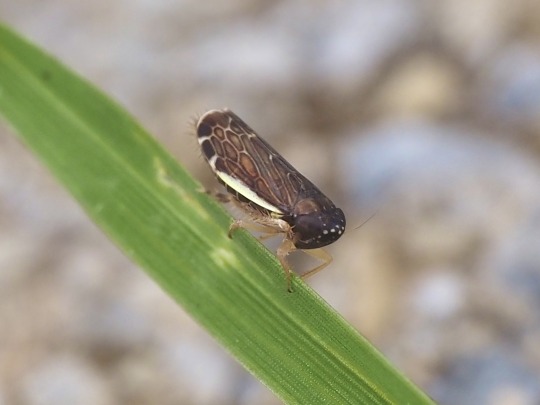
leafhoppers first, since there’s so many!Draeculacephala antica, big pointy green, & Planicephalus, a bug with a lot of personality
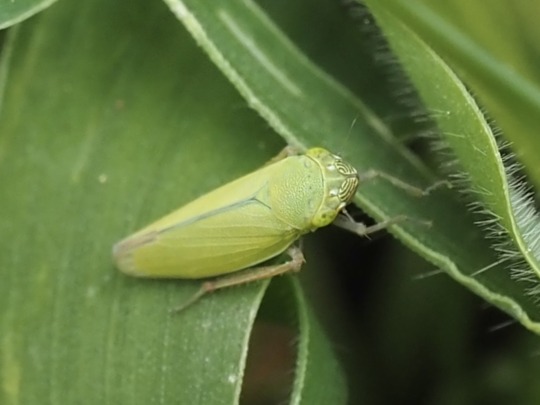
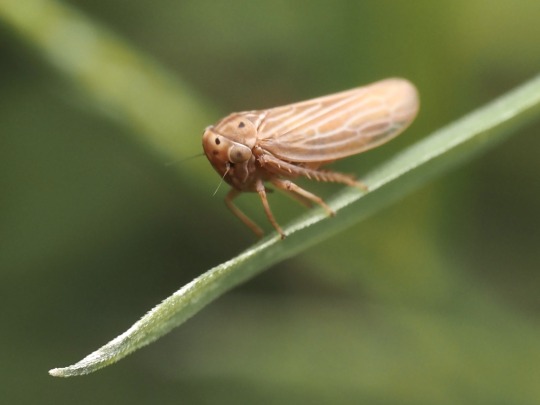
Helochara communis, the “Bog Leafhopper,” and Agallia constricta, a very numerous species here.
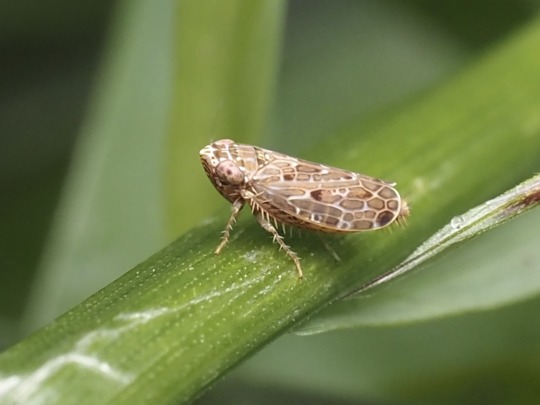
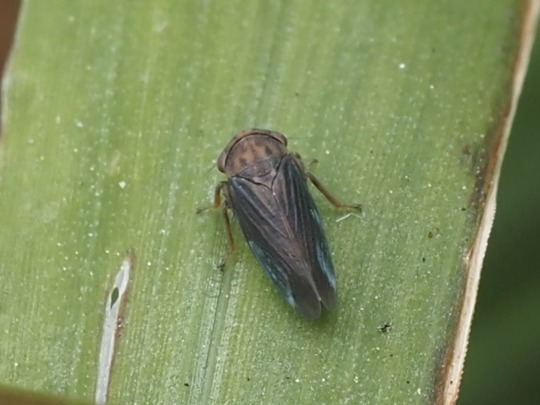
Polyamia weedi (great name) and a tiny Agallia that might be A. deleta but I’d probably have to chop it up to be sure.
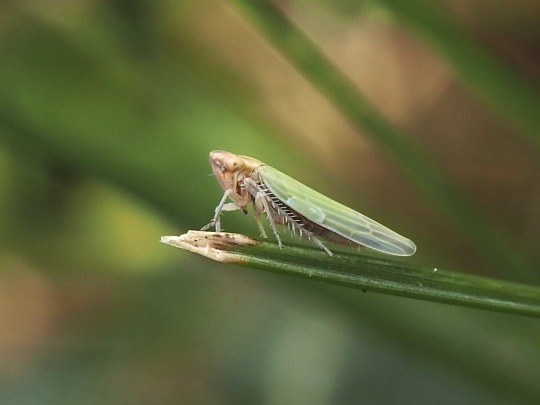
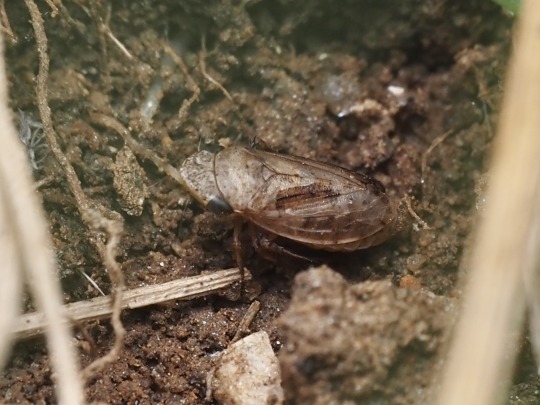
Dikraneura arizona was the most common species at this time of year, there must have been dozens. Anoscopus is a creeping squat leafhopper that can jump quite far.
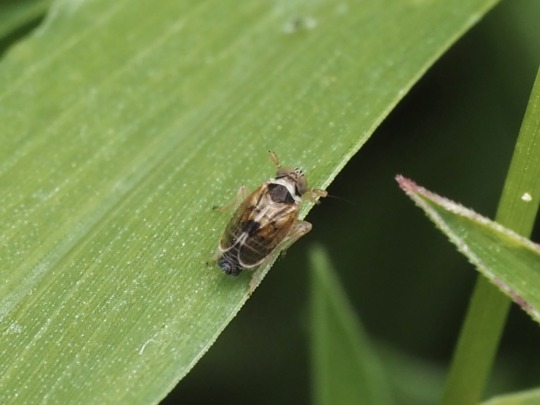
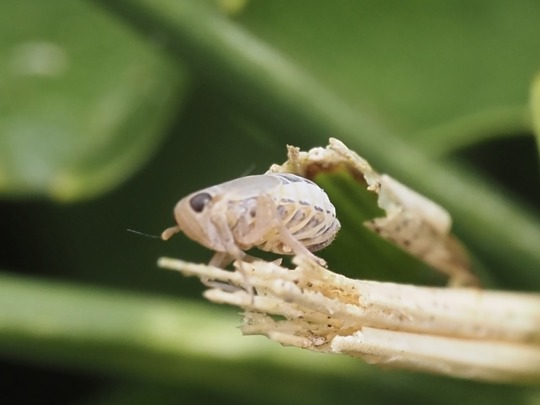
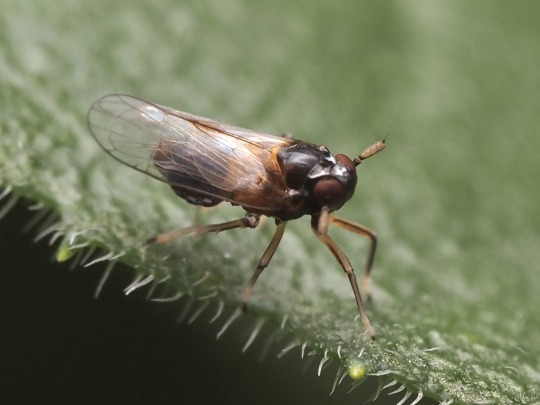
Chionomus puellus is the first delphacid planthopper, while the others are Pissonotus sp. delphacids can mature into short, medium, and long-winged forms, so the latter two might be the same species with different phenotypes! how wild


Microtechnites bracteatus is a tiny mirid bug that jumps. Chaetocnema is a flea beetle, which also jumps!
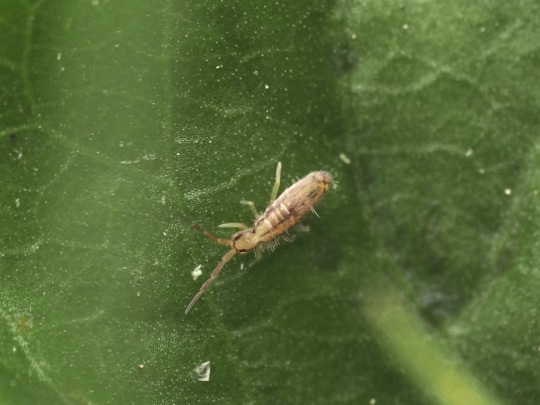
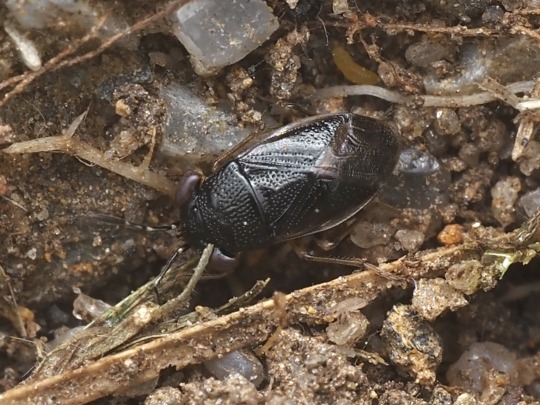
Homidia socia jumps too, since it’s a springtail! the big-eyed ground bug Geocoris uliginosus does not jump.



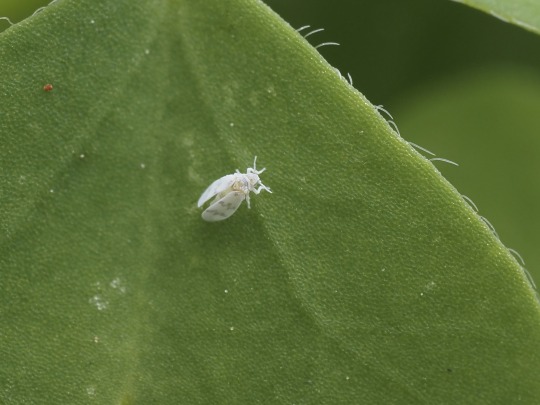
some flies: a predatory Chrysotus, a leafminer (?), a scavenger phorid fly, and a whitefly. the whitefly isn’t a fly.

the largest animal I saw was Agrotis ipsilon, a noctuid moth.
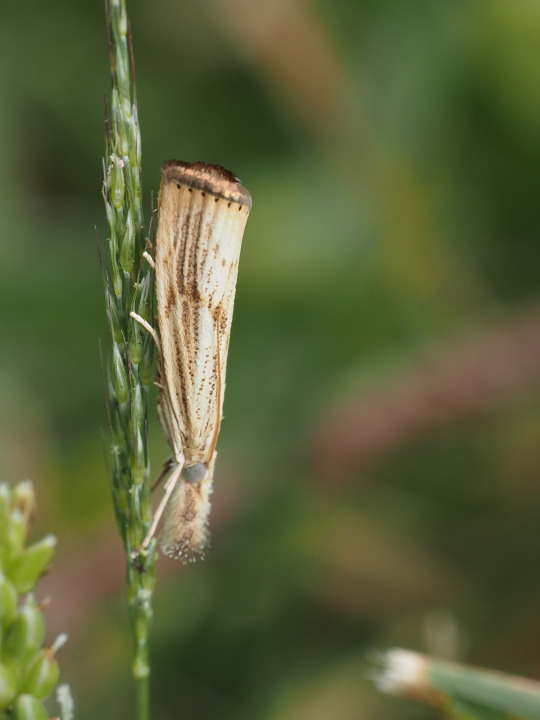
Agriphila ruricolellus was also bigger than most.
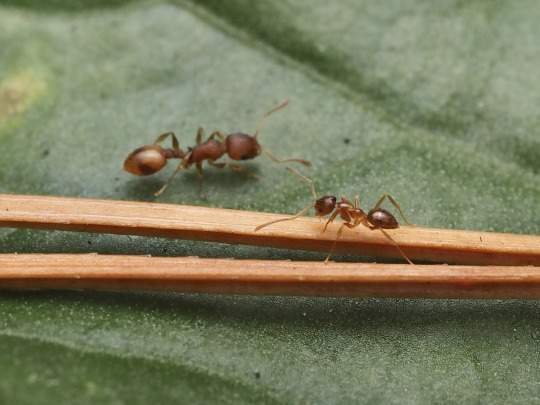
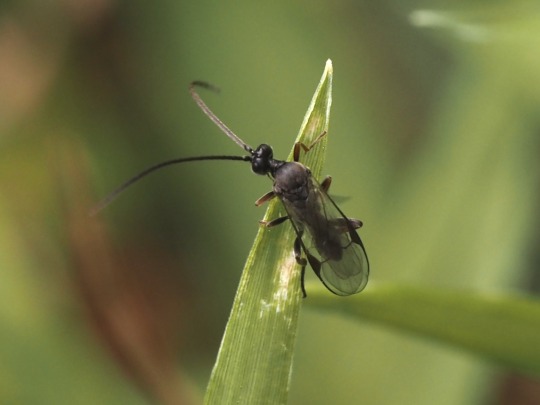
Temnothorax and some other ant, a braconid wasp too.
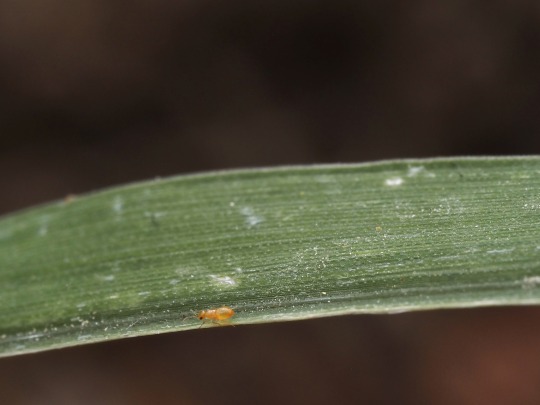
lastly, an incredibly tiny parasitoid wasp of some sort. I think five would have plenty of legroom on the dot if this “i”.
683 notes
·
View notes